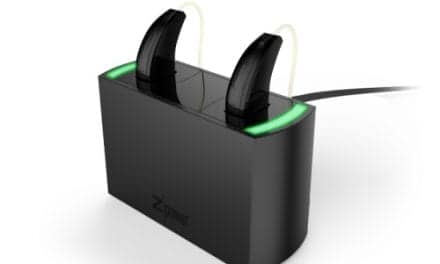Otonomy, Inc. (NASDAQ:OTIC), a biopharmaceutical company dedicated to the development of innovative therapeutics for otology, announced seven data presentations related to the company’s programs in hearing loss and tinnitus at the upcoming Association for Research in Otolaryngology (ARO) Annual MidWinter Meeting, February 10-13, 2018, in San Diego. This includes multiple presentations demonstrating the therapeutic potential of OTO-413, an otic formulation of brain-derived neurotrophic factor (BDNF), for the repair of cochlear synaptopathy and the treatment of speech-in-noise hearing difficulties.
Otonomy’s presentations related to the OTO-413 program are as follows:
- “Effectiveness of TrkB and TrkC agonists at promoting neuron survival, neurite extension and synapse restoration in rat cochlea ex-vivo models” by Szobota et al; oral presentation on February 13 from 3:00-3:15 pm PST;
- “A sustained-exposure formulation of the neurotrophic factor BDNF protects against noise-induced cochlear synaptopathy in young adult and aged rats” by Piu et al; poster presentation on February 11 beginning at 1 pm PST,
- “Development of rodent models of cochlear synaptopathy and auditory neuropathy” by Barden et al; poster presentation on February 11 beginning at 1 pm PST.
“These nonclinical results support the potential of OTO-413 for the treatment of synaptopathy-related hearing loss by showing that BDNF is active in promoting spiral ganglion neuron survival, neurite growth, and synapse repair, and by demonstrating that OTO-413 provides sustained exposure of BDNF in the inner ear from a single local administration,” said Kathie Bishop, PhD, chief scientific officer of Otonomy. “Results from these and other studies support our advancement of OTO-413 into development with a Phase 1/2 clinical study in hearing loss patients expected to start in the first half of 2019.”
Additional poster presentations by Otonomy scientists and research collaborators include:
- “Comparison of moderate and severe models of aminoglycoside-induced hair cell loss in cochlear explants” by Jacques et al; poster presentation on February 10 beginning at 1 pm PST;
- “Functional characterization of OTO-311, a sustained-exposure formulation of the NMDA receptor antagonist gacyclidine, in clinical development for the treatment of tinnitus” by Tsivkovskaia et al; poster presentation on February 12 beginning at 1 pm PST;
- “Perilymph pharmacokinetics compared for dexamethasone-phosphate, dexamethasone, and triamcinolone with local applications” by Salt et al; poster presentation on February 12 beginning at 1 pm PST,
- “In-vivo imaging of central auditory neurons following acute pharmacological manipulation of the cochlea” by Babola et al; poster presentation on February 12 beginning at 1 pm PST.
In addition, David A. Weber, PhD, president and CEO of Otonomy will deliver an invited presentation titled “The Business, Financial, and Development Path Required for Pharmacotherapy of Neurosensory Disease” during a Presidential Symposium titled “From Bench to Boardroom: Perspectives on Commercializing Research in Otolaryngology” which will be held on February 10 from 8:00 am to 12:15 pm PST.
“Otonomy’s multiple presentations at ARO, the premier international otolaryngology research conference, is a clear indication of the breadth and depth of our product development activities,” said Dr Weber. “We also view the interest in discussing translational issues, including product commercialization, during the Presidential Symposium as a very healthy sign of the emerging otology market opportunity that bears comparison to the retinal treatment market before availability of FDA-approved intravitreal products.”
Source: Otonomy





